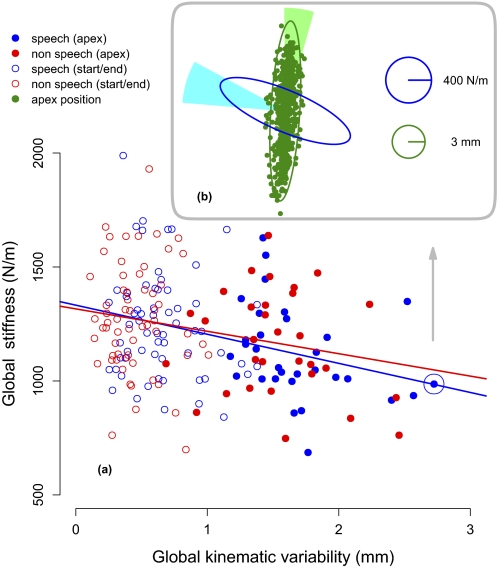FIG. 5.
Kinematic variability in jaw movement is inversely related to stiffness. A: scatterplot of global stiffness against global kinematic variability for all subjects in both conditions (speech and nonspeech). Jaw positions at the apex of the movement are shown with filled circles. Start and end positions have unfilled circles. Global stiffness is defined as the geometric mean of the eigenvalues of the stiffness matrix. Global kinematic variability is obtained from the 1SD dispersion matrix of jaw positions by computing the geometric mean of its eigenvalues. Regression lines are shown separately for speech and nonspeech conditions. B: null-field positions for jaw movements in the sagittal plane for a selected subject in the speech condition, corresponding to the highlighted point in A. The 95% confidence ellipse is drawn in green around the points. The corresponding stiffness ellipse is shown in blue. The 2 conical sections represent ±1SD for the orientation of the major axis of the stiffness and kinematic variability ellipses, computed for all subjects in both conditions: kinematic variability (light green) and stiffness (cyan).

